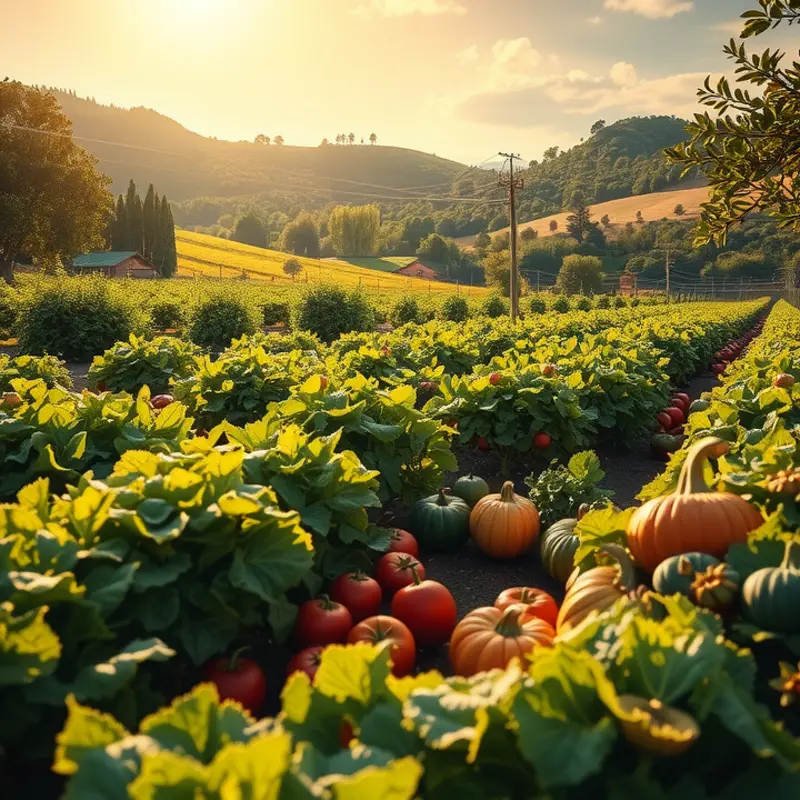Crafting eco-friendly meals not only benefits your health but also nurtures the planet. This guide provides practical recipes that are delicious, nourishing, and environmentally conscious. From plant-based ingredients to mitigating food waste, these recipes empower you to make choices that are kind to your body and to Mother Earth.
Wholesome Wonders: Plant-Based Meals

Embracing plant-based meals can transform both your diet and your environmental impact. Selecting fresh, seasonal produce not only boosts flavor but also reduces your carbon footprint. Opt for vegetables that are abundant in your local area, as these require less transportation and are often fresher.
For a hearty breakfast, consider a versatile vegetable scramble. Begin with a base of firm tofu, crumbled and sautéed in olive oil. Add seasonal greens like spinach or kale, which offer both flavor and nutrients. Sprinkle in a mix of spices such as turmeric and cumin for color and depth. Serve with whole-grain toast or quinoa for a complete meal. Quinoa’s popularity is not just a trend; its cultivation is more sustainable than other grains in many regions.
Lunchtime can be a market-inspired salad that balances crunchy, fresh vegetables with protein-rich legumes. Start with a mix of greens such as arugula or mixed salad leaves. Incorporate cucumbers, tomatoes, and bell peppers for crispness. Add a generous portion of chickpeas or black beans for protein and fiber. Dress your salad with a blend of olive oil, fresh lemon juice, and a pinch of salt and pepper. This meal is satisfying and keeps you full without weighing you down.
Dinner could be an opportunity to showcase grains and legumes. Try a lentil and tomato stew. Sauté onions, garlic, and carrots in a pan until they caramelize. Stir in diced tomatoes, green lentils, and vegetable broth. Let it simmer until the lentils are tender. To enhance flavor without extra salt, use bay leaves or a pinch of smoked paprika. Consider serving the stew over brown rice or with crusty whole-grain bread.
By choosing recipes that focus on local ingredients and whole foods, you contribute to a sustainable food ecosystem. If you’re looking for tips on how to maximize flavor in plant-based dishes without relying on salt, consider exploring guides that boost flavor creatively.
Remember, the key to sustainable plant-based meals lies in simplicity and minimal preparation. Whether it’s a quick breakfast or a soulful dinner, let each dish celebrate nature’s bounty responsibly.
Waste Not: Creative Leftover Recipes

Transforming leftovers into appealing meals not only saves waste but also maximizes the time and effort spent preparing food. Embrace your inner culinary artist by viewing remnants as ingredients for new creations. Whether it’s overripe fruits or an assortment of vegetables, there’s always a way to breathe new life into them.
Start with your fruit basket. Those spotted bananas can evolve into creamy smoothies. Blend them with a touch of almond milk and a handful of spinach for an energizing green shake. Tailor the taste to your liking with peanut butter or flax seeds, providing both protein and texture. Or, use mashed bananas as a natural sweetener in muffins or pancakes.
Got leftover vegetables? Consider crafting a hearty frittata. Beat some eggs, then toss in chopped veggies such as bell peppers, onions, or last night’s roasted potatoes. This dish is flexible, welcoming any combination of herbs or cheeses. Just a quick bake in the oven yields a wholesome meal, perfect for breakfast or a light lunch.
Bread past its prime is an opportunity rather than waste. Turn stale bread into crunchy croutons or rustic breadcrumbs. Simply drizzle with olive oil, season with herbs, and bake until golden. These toppings add texture and flavor to soups and salads. Alternatively, transform them into bread pudding with custard for a satisfying dessert.
Vegetable peels and stems, often discarded, have untapped potential. Collect carrot tops, onion skins, and celery ends for a stock that forms the base of numerous recipes. Boil them gently with herbs to create a fragrant broth, laying the groundwork for future stews or risottos.
Crafting your meals from leftovers aligns with sustainable practices by minimizing excess and promoting environmental care. By reimagining what’s left of yesterday’s meal, you participate in a cycle of renewal that benefits both your kitchen and the planet. For more insights on reducing waste through intelligent food storage, explore Eco-Smart Kitchen Storage. This guide provides practical advice on extending the life of your ingredients, ensuring you’re well-equipped to make the most of each purchase.
Remember, each dish you create from leftovers contributes to a larger narrative of sustainability. Harness creativity in your cooking, and you’ll not only enrich your meals but also foster a deeper connection with the food you consume. The secrets to delightful culinary improvisation lie in creativity and knowing your pantry. So open your fridge, and let your imagination lead the way.
Final words
By embracing eco-friendly recipes, you’re not just cooking; you’re making a conscious choice to sustain the environment. Each meal is an opportunity to reduce your carbon footprint, support local agriculture, and nourish your body with wholesome ingredients. Transitioning to a more sustainable kitchen is a journey, and every small step counts. So, grab those seasonal veggies, get creative with your leftovers, and remember that eating with the planet in mind can be both delicious and fulfilling.








